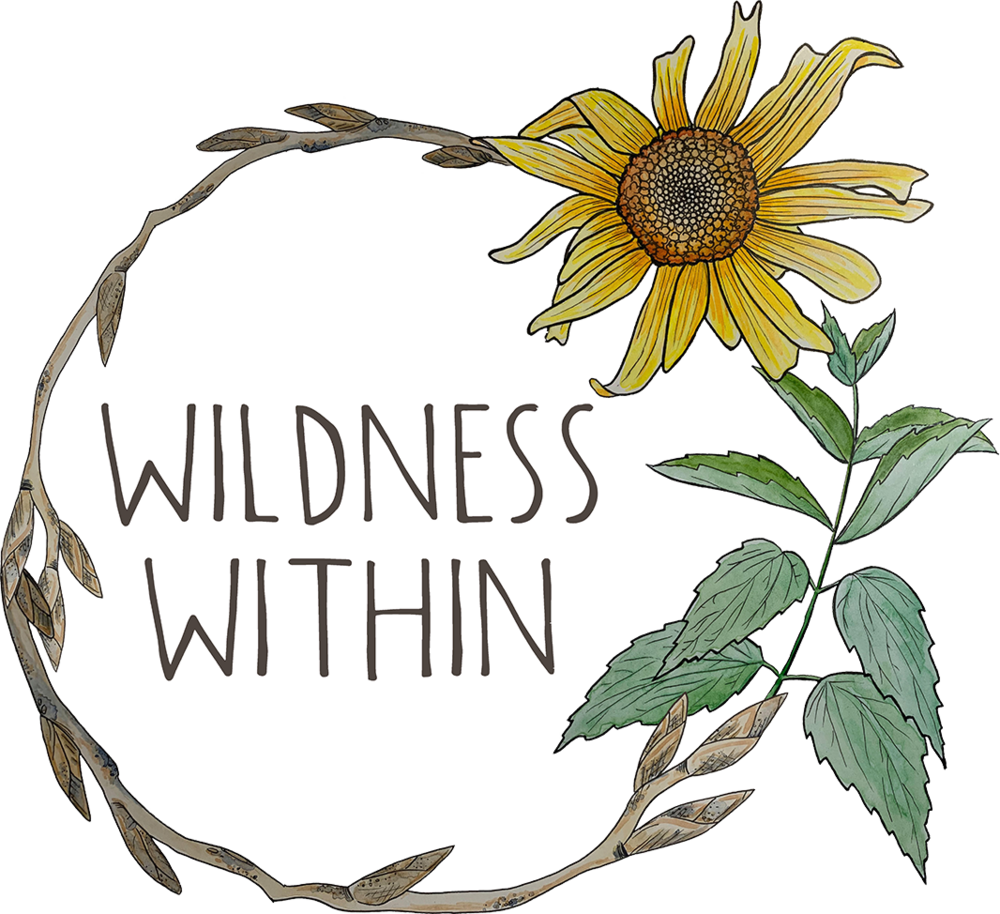Common Names: Everlasting, Life Everlasting, Cottonweed, Indian Posy
Botanical Name: Anaphalis margaritacea
Plant Family: Asteraceae, Composite Family
Parts Used: Flower & leaves
Actions: Anti-inflammatory, Astringent, Antihistamine, Expectorant, Diaphoretic, mild Sedative
Habitat: This plant seems to like a disturbed site that receives a decent amount of sun. Pearly Everlasting is commonly found in the mountainous regions of Western North America. I generally find it in clear-cuts, disturbed roadsides, edges of fields or sometimes burn sites.
Collection: Gather the herb when flowering and flowers are more “compact” (not opened and dried out), this is ideal in mid- to late- summer (May-August).
Pearly Everlasting Medicine:
Colds, Fevers, Sore Throats
Pearly Everlasting is my wild go-to herb for lung and respiratory issues. This plant is an expectorant that helps break up mucus and encourage productive coughs. It is astringent and diaphoretic, so it helps dry out your system internally and induce sweating to break fevers. It is also an anti-inflammatory that helps reduce nasal swelling. I use this plant in my “Wham-Bam-No-Thank-You-Mam” tea to help bring a cold/infection/fever to the surface and dry the body out. If you are already dried out and have a deep, hoarse cough, try more mucilaginous expectorants.
Antihistamine
Pearly Everlasting can help stop the release histamine from the immune system, which helps reduce inflammation and cell blockage during an allergic reaction. It is an astringent and an anti-inflammatory remedy for swollen mucus membranes. Pearly has been used to treat asthma as well as allergic reactions. A tea or tincture can be used as an antihistamine.
Headaches
I use pearly everlasting in my “grounding” smoking blend that aids in bronchial support. The smoked flowers help the respiratory system and also have relieved headaches. And according to Michael Moore, the dried leaves were used by Native Americans to flavor their smoking blends. A good combination is Coltsfoot, Mullein, Raspberry leaves, Pearly Everlasting leaves and Horehound. It is not recommended to smoke this plant in a blend habitually, yet for medicinal purposes.
Anti-Inflammatory
Whether it’s to soothe a sore throat, help relieve an allergic reaction or reduce bruising and swelling, it should be known that Pearly Everlasting is a great anti-inflammatory. If you are in a wilderness first aid situation, the leaves can be used as a poultice to reduce swelling and redness for a sprain or injury. Traditionally, poultices were made to relieve joint pain and deep tissue inflammation. Also, Michael Moore states the leaf poultices are great for stimulating and healing sunburns.
Photos by Rachael Witt
Wham-Bam-No-Thank-You-Mam Tea:
1 part Oxeye Daisy flowers
1 part Pearly Everlasting flowers
1 part Yarrow flowers and leaves
Harvest plants in summer, dry harvested material, mix together and use as tea when sick or at the onset of a cold/flu. This tea is also great for allergy season. Take ½ - 1 cup every 6 hours.
REFERENCES:
Botany in a Day by Thomas J. Elpel
Edible and Medicinal Plants of the West by Gregory L. Tilford
Medicinal Plants of the Pacific West by Michael Moore
Teachings by Lindsay Huettman



